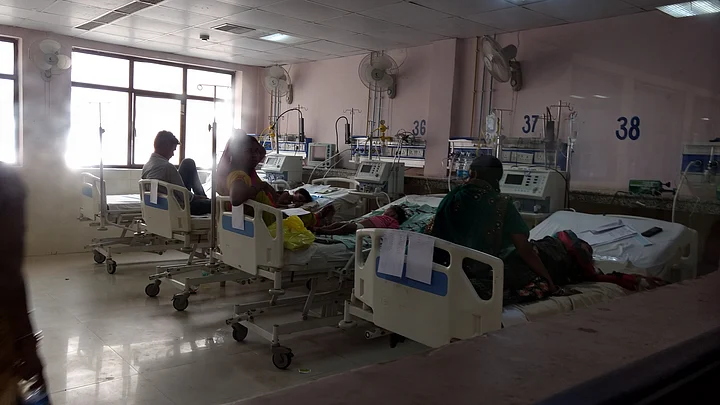Oxygen, a life force that keeps us ticking. You cut off oxygen and death is imminent. In a hospital, you cut off the oxygen supply and you’ve cut off its lifeline.
What happened at the BRD Medical College, a massive 1000 bed facility in Gorakhpur, the constituency of Uttar Pradesh Chief Minister Yogi Adityanath, was not just negligence, it was mass murder.
A committee appointed to probe the shortage of oxygen supply in Gorakhpur Hospital that led to the deaths of over 60 children has put the blame on two top doctors.
The report led by the District Magistrate Rajeev Rautela found that logbooks regarding oxygen supply were terribly maintained and pointed to corruption.
Here’s what the report says:
1. Dr Satish Kumar, the head of the hospital's anaesthesia department, who was responsible for overseeing supply of oxygen, has been primarily held responsible for the disruption. The inquiry found the doctor, who was in Mumbai on the day of the tragedy, was guilty of dereliction of duty.
2. The medical college's suspended principal Dr Rajeev Misra was also blamed for lack of supervisory control and delayed payments to Pushpa Sales, the firm that supplied oxygen to the hospital.
3. The report does not indict Dr Kafeel Khan, who was sacked by the Yogi Adityanath government.
4. The report also blamed Pushpa Sales, saying it should not have cut off supply despite non-payment of bills since it was in the business of saving lives.
What Happened Between 1 Aug to 10 Aug?
The oxygen supply to the hospital was stopped on 1 August by Pushpa sales after the hospital failed to make payments of approx Rs 70 lakh. The hospital finally ran out of oxygen on 10 August.
Why was the money not transferred to Pushpa Sales, the sole vendor of liquid oxygen to the hospital?
According to a report in Hindustan Times, operators of the pipelines that supply oxygen to various wards of the Nehru Hospital within the BRD Medical College had also warned of depleting oxygen stock some 12 hours before the children began to die on Thursday evening.
A day before, the reading showed that they had a stock of only 900 kgs of oxygen that would run out by night.
The hospital needs a daily supply of about 250 oxygen cylinders of 7 kgs capacity each. It translates to 1,750 kgs of oxygen every day.
The hospital earlier used three local vendors to get their oxygen. Why was it that since July they had only one vendor – Pushpa Sales?
Why was no attempt made in those 10 days between 1 Aug to 10 Aug to procure oxygen from other vendors?
Norms in Big Hospitals
We spoke with critical Care Specialist Dr Sumit Ray at Delhi’s Gangaram Hospital about the norms for oxygen supply in big hospitals.
Many big hospitals have self sufficient liquid oxygen plants that provide a steady supply of oxygen to meet all requirements. At Gangaram, there are two liquid oxygen systems, one as a backup incase the first one fails.
These plants are connected via a manifold to eight back up cylinders. A monitoring system keeps an eye on the air pressure to ensure it is maintained. If the system fails or levels drop below a certain point, the back up cylinders kick in.
Dr Ray says that rarely happens.
But if the plant has to rely on the cylinders, then they will deplete very fast and you’ll need a steady supply of cylinders to ensure the hospital doesn’t run out of oxygen.
Big hospitals like Gangaram keep enough cylinders around to last six to seven days as back up and they have multiple vendors on rolls to ensure there is no shortage.
Dr Ray says that there is enough warning that goes out in case the plant malfunctions and there is adequate time to arrange for cylinders.
The fact that despite shortage warnings, officials in the BRD Medical College let oxygen supply deplete further points to a massive criminal negligence on part of the administration.
(At The Quint, we question everything. Play an active role in shaping our journalism by becoming a member today.)
